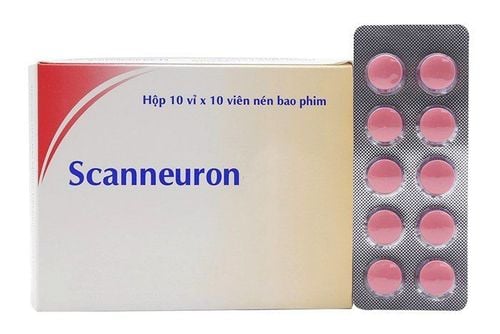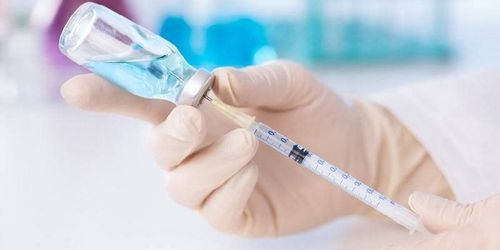This is an automatically translated article.
Peanuts are a common trigger for severe allergies with potentially life-threatening symptoms such as anaphylaxis. Currently, peanut allergy is on the rise in children. Therefore, we need to know the basic information of peanut allergy to prevent disease safely.1. Symptoms of peanut allergy
Allergy to peanuts usually occurs within minutes of exposure to peanuts, signs include:Runny nose. Skin reactions such as hives, redness or swelling. Itching or tingling in or around the mouth and throat. Digestive problems such as diarrhea, stomach cramps, nausea or vomiting. Throat constriction. Shortness of breath or wheezing. Among them, anaphylaxis is the most dangerous reaction, which can be life-threatening.
Allergy to peanuts is the most common cause of food-related anaphylaxis, which is a medical emergency requiring treatment with an injection of epinephrine (adrenaline) and medical attention. right away.
Signs of anaphylaxis include:
Difficulty swallowing. Swollen throat makes it difficult to breathe. Blood pressure drops dramatically. Rapid pulse. Dizziness, lightheadedness or loss of consciousness.
2. Causes of peanut allergy

Đậu phộng là một trong những nhân tố gây dị ứng nghiêm trong nhất
Exposure to peanuts can happen in a variety of ways:
Direct contact: The most common cause of peanut allergy is eating peanuts or foods containing peanuts. Sometimes direct skin-to-skin contact with peanuts can also cause an allergic reaction. Inhalation: Allergic reactions can be triggered when an infected person breathes in dust or aerosols containing peanuts, from peanut powder, to peanut oil.
3. Risk factors for peanut allergy
Currently, doctors are still not clear why some people are allergic to peanuts, while others are not. However, when the following factors are present, you are more likely to have this type of allergy than others, including:Age: Food allergies are common in children, especially young children walking and infants. As you age, your digestive system matures and your body is less able to react to foods that cause allergies. Previously had a peanut allergy: Some children have a peanut allergy and it's most common as an adult. However, even then, the allergy can still recur. Other allergies: If you are already allergic to one food, there is an increased risk of developing an allergic reaction to another food. Family member with allergies. Allergic dermatitis.

Nếu thành viên trong gia đình bị dị ứng thì bạn cũng sẽ có nguy cơ dị ứng đậu phộng
4. Peanut allergy treatment
There is currently no definitive treatment for peanut allergy, but researchers are studying oral immunotherapy (desensitization). This potential treatment is indicated for children with peanut allergies or those at risk for peanut allergy as their intake of peanut-containing foods increases over time. However, the long-term safety of oral immunotherapy for peanut allergy is uncertain and has not been approved by the FDA.As with any food allergy, treatment includes taking steps to avoid the allergenic foods and knowing how to detect and respond to severe reactions .
The only way to prevent a reaction is to completely avoid peanuts and peanut products. But peanuts are common, and despite your best efforts, you will likely be exposed to peanuts at some point.
When experiencing a severe allergic reaction, the person should be given an injection of epinephrine immediately and taken to the hospital's emergency department. Many people with allergies carry an epinephrine auto-injector at all times (EpiPen, Auvi-Q, Twinject). The device is a syringe, with epinephrine inside, and injects a single dose of the drug when the patient or family member presses on the thigh.
If your doctor has prescribed an epinephrine autoinjector (epinephrine autoinjector), you need to:
Carry it with you at all times. Replace auto-injector epinephrine (expired epinephrine autoinjector. Ask your doctor to prescribe an extra auto-epinephrine just in case you miss the injection or the device has a problem. Know how to use it. Also, teach family members and friends how to use this device so they can help you in case you are unable to give the injection Know exactly when to use auto-epinephrine.
If If you have unusual symptoms, you should be examined and consulted with a specialist.
Please dial HOTLINE for more information or register for an appointment HERE. Download MyVinmec app to make appointments faster and to manage your bookings easily.
Reference source: mayoclinic.org













